Basic Dress Block for Plus Size
Deutsch
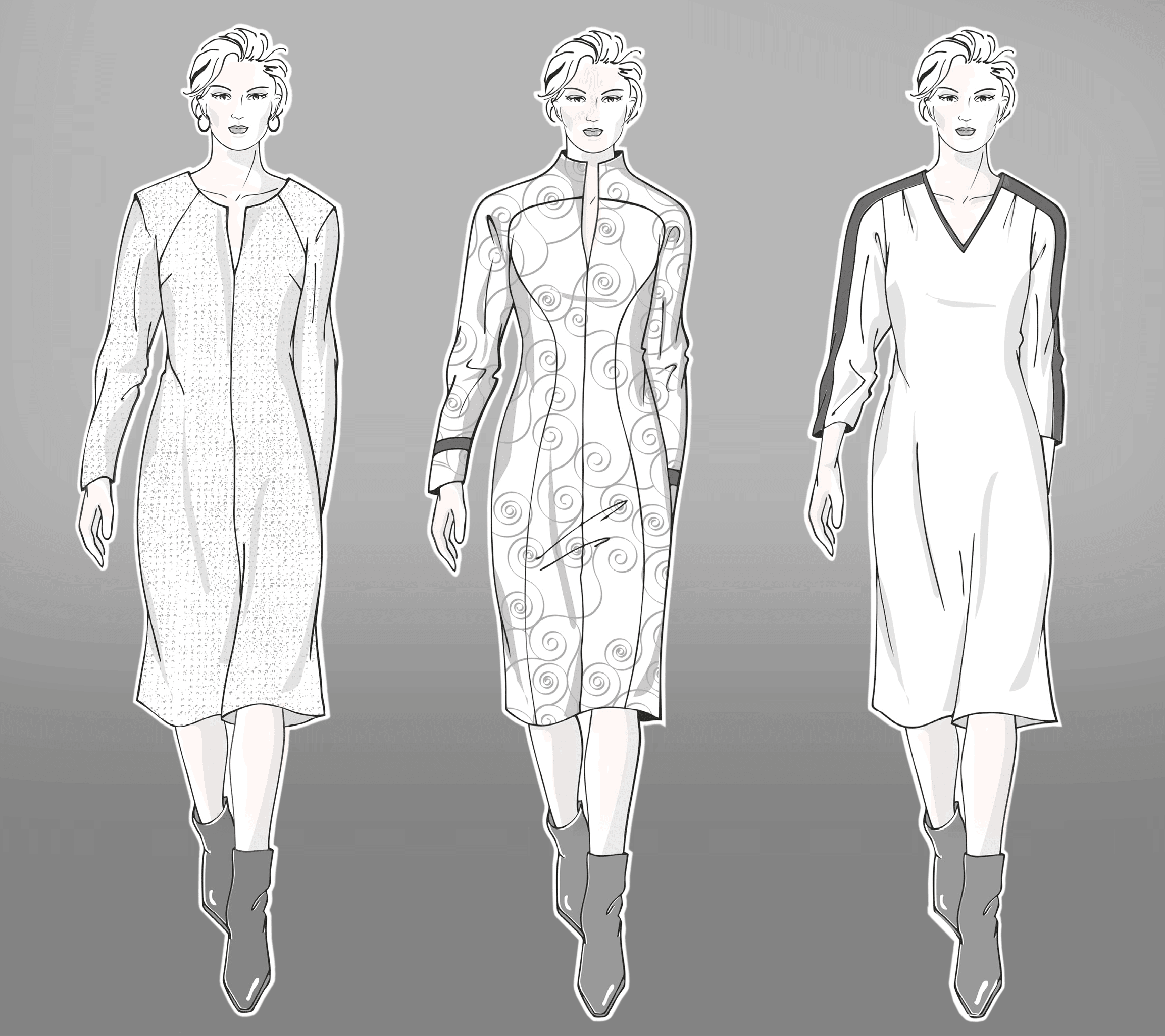 (Photo Credit: Nora Kühner)
(Photo Credit: Nora Kühner)
The proportional relation of chest girth, waist girth and hip girth is crucial for the construction of the basic block (see table). In this article you find general information about identifying the right size and choosing a suitable construction method for the basic block.
Dieser Beitrag ist ein Auszug. Den vollständigen Beitrag findet Ihr in der Damen-Rundschau 11.2016. You can order an englisch translation of the pattern part of this Issue thru the Customer Service.
In the following initial situations, a special setup of the basic cut must be used:
The difference of chest and hip girth in comparison to the waist girth decreases with increasing size. The waist circumference is increasing more than the circumference at the chest and at the hip. A size qualifies as a Plus Size if 1/4 of the waist girth is larger than the chest width plus ease. Chest and hip girth become more and more similar until the hip girth of size 56 is as large as the chest. The hip girth is even smaller than the chest girth for size 58. Take the pattern construction for a flat seat into account if the hip girth smaller than the chest girth. A hip girth that is at least 10 cm larger than the chest girth indicates a full seat which requires specific pattern adjustments.
Pattern Construction Basic Dress Block
Front and Back Pattern
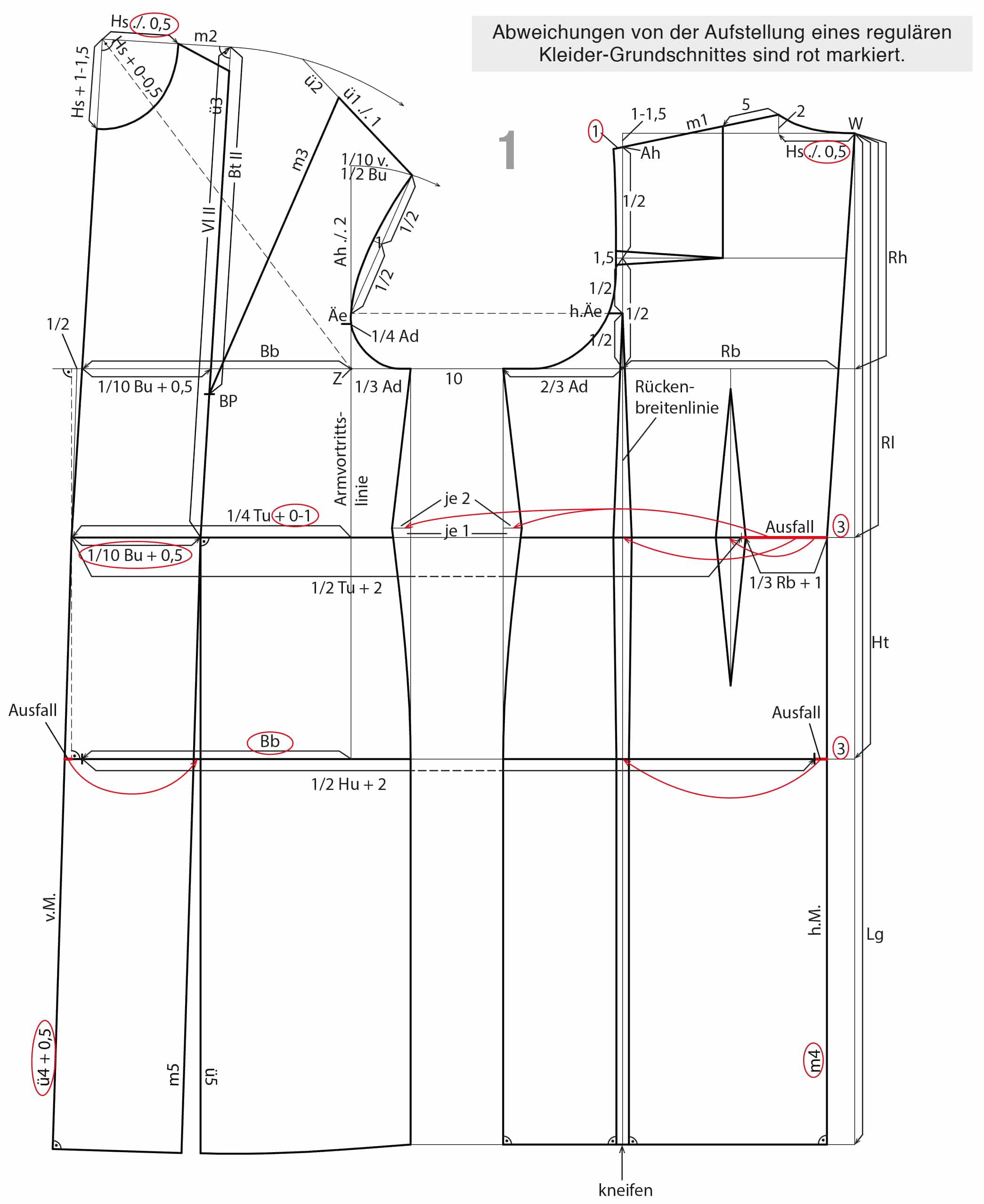
1 From the starting point W (nape of the neck), measure on a vertical line downward the scye depth, the back waist length, the hip depth and the length. Square out to the left from all points. Taper the centre back 3 cm at the waist and at the hip. Draw the centre back from the starting point W over the waistline and the hip line to the hem. On the chestline, measure the back width plus ease, 2/3 of the scye width plus ease, 10 cm gap, 1/3 scye width plus ease and the chest width plus ease to the left. Draw the back width line, the guidelines for the sideseam and the front pitch line as shown in the illustration. On the waistline, measure ¼ of the waist girth plus 0-1 cm from the front pitch line to the left and mark the centre front.
Draw the centre front from the waistline to the chestline and extend it upwards. On the chestline, measure 1/10 of the chest girth from the centre back to the right. Measure the same amount along the waistline. Connect both points with a line and extend this line upwards for the bust dart line.Measure the neck width mins 0.5 cm from the starting point W (nape of the neck) to the left and square up 2 cm. Draw the back neckline as shown in the illustration. For the slope of the back shoulder seam, measure 1 cm to 1.5 cm downward from the intersection of the neck width line and the back width line. Draw the back shoulder line and extend it 1 cm outward. Divide the scye depth in half and mark the lower quarter. Square out to the left from the ¼-scye-depth point 1.5 cm to the left. Measure the back armhole height from the chestline to the shoulder and transfer this measurement minus 2 cm to the front armhole from the chestline upwards along the front pitch line. Draw a circular arc over the front armhole height with pivot point Z.
Measure the front waist length II from the waist upwards along the bust dart line and square out to the left. Measure the bust length from the front length downward and mark the bust point. Draw a circular arc over the front length and a circular arc over the armhole height. Measure 1/10 of ½ chest girth from the front pitch line to the right. Measure the back shoulder width (m1) minus 1 cm from this point towards the upper arc. Draw the front and back armhole as shown in the illustration. Measure the neck width minus 0.5 cm from the centre front to the right and the neck width plus 1 cm to 1.5 cm downwards. Draw the front neckline nicely rounded. Measure the distance from the front neckline to the bust dart and take away this amount along the front shoulder seam. Draw the right bust dart leg from this point to the bust point.
Measure the length of the right bust dart leg (m3) and transfer this amount to the left dart leg from the bust point upwards. Connect this point and the neck point for the front shoulder slope. Measure ¼ of the scye depth from the chestline upwards along the front pitch line and mark the front armhole notch. Draw a dashed guideline from the intersection of the centre front and the waistline perpendicular to the chestline to determine the position of the lower part of the centre front. Measure the distance between the centre front and the dashed guideline at chest level and mark the halfway point. Draw the new centre front from the halfway point to the waist and extend this line to the hem to find the correct slant of the lower centre front line….
Armhole
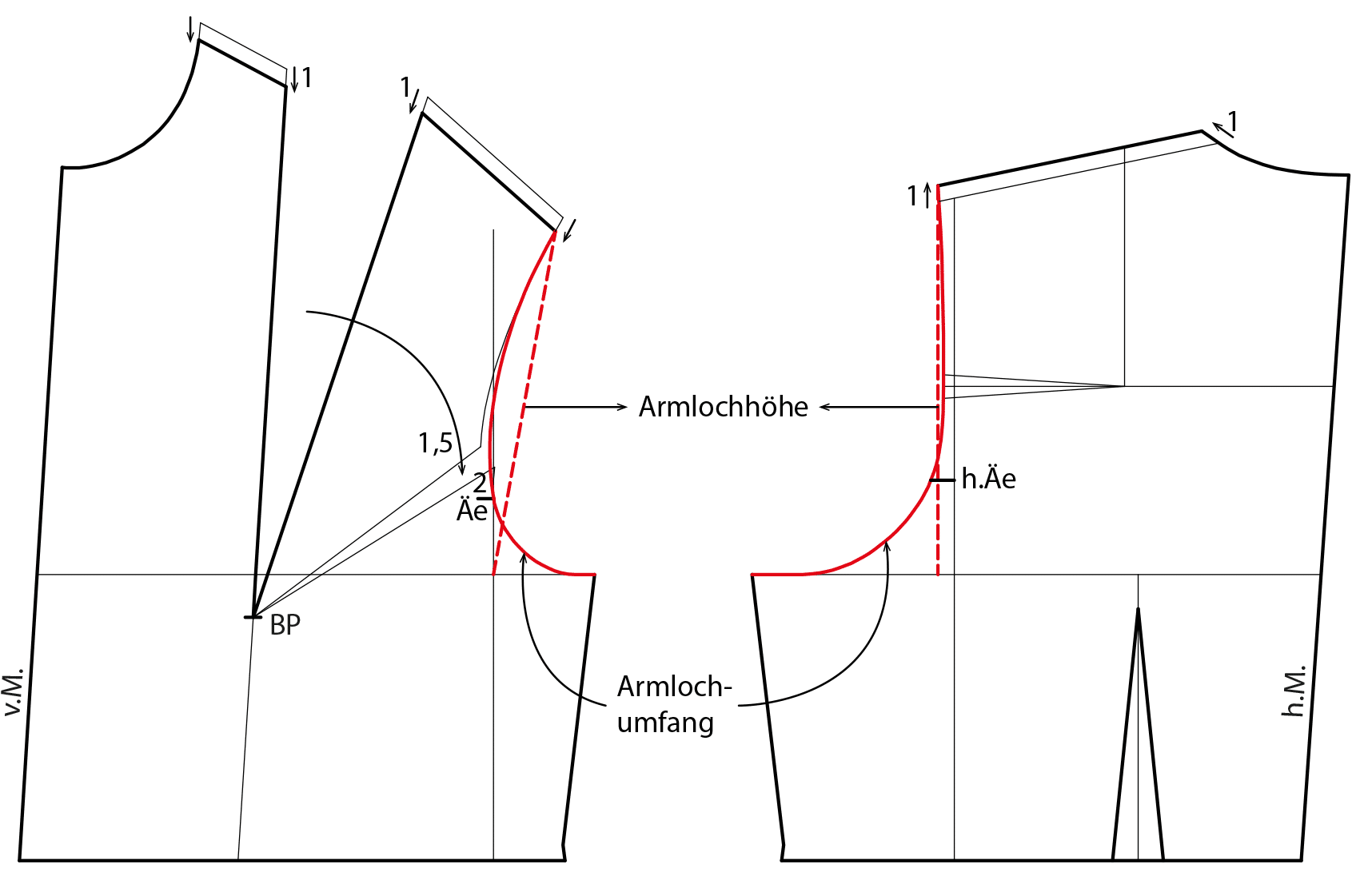
2 Shift the shoulder seam 1 cm to the front. The shoulder dart remains in the armhole. Open the front armhole 1.5 cm. Draw the new armhole. This armhole adjustment is the basis for all styles and is done before the sleeve pattern is drafted. Adjust the sleeve pattern as described in “Metric Patternmaking for Dresses and Blouses” (Rundschau Publishing, page 134) if a basic sleeve block already exists for the normal armhole.
Measure the armhole height from the back shoulder perpendicular to the chestline and from the front shoulder to the intersection of the chestline and the front pitch line (dashed lines). Measure all around the front and back armhole curve for the armhole circumference.
Pattern instructions and patterns for sewing Plus Size Fashion can be found in our online shop.


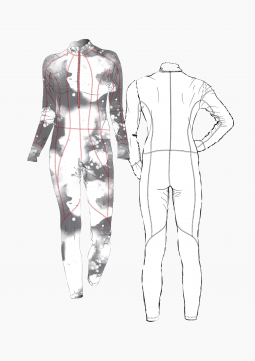
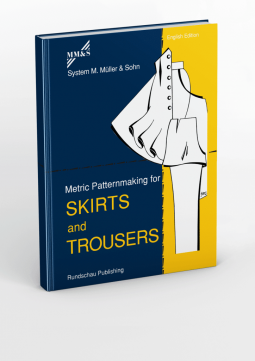
Thank you for this detailed explanation. I have been drafting my pattern using Mueller & Sohn system, but for the longest time it had been difficult to find information and help in English. I look forward to more pattern construction tips, especially for petite-sized women (155-160 cm height). (Most German-based pattern drafting direction gives ease/zugabe at German size average, which is 168 for women).
Dear Beatrix, we appreciate very much that you like our contributions. In the Rundschau Issue 3/2016 (https://www.muellerundsohn.com/shop/rundschau-fuer-internationale-damenmode-3-2016/) you can find a pattern construction for a dress with concealed placket in size 19 (Body height 160cm). The translation can be requested through our customer service: kundenservice@ebnerverlag.de. In our book Dresses & Blouses you will find pattern constructions for various figures > https://www.muellerundsohn.com/en/shop/metric-patternmaking-for-dresses-and-blouses/
Thank you for the response
The link does not work anymore. Can you kindly give me a working link?
> https://www.muellerundsohn.com/en/shop/metric-patternmaking-for-dresses-and-blouses/
AWESOME. Thank you for posting this. Can’t wait to try it out and extend my sewing skills
We are very pleased that you like our article. Thank you!
Do you do those 3 dress patterns which are illustrated in the picture?